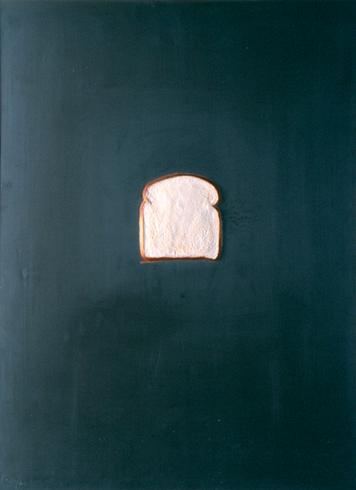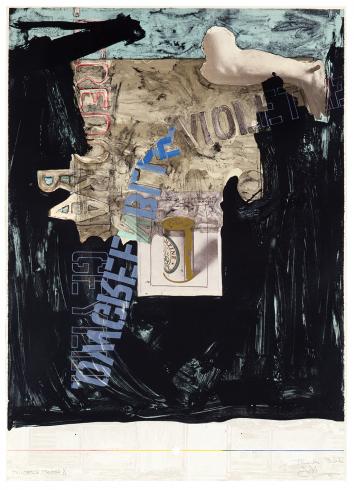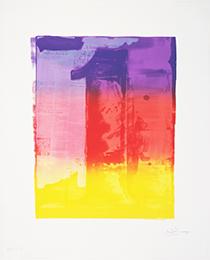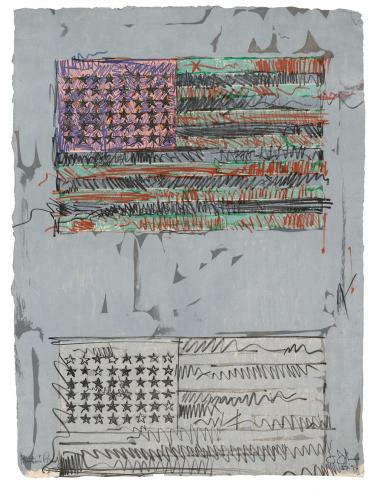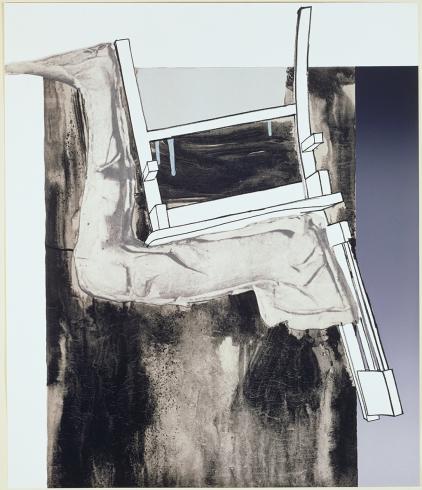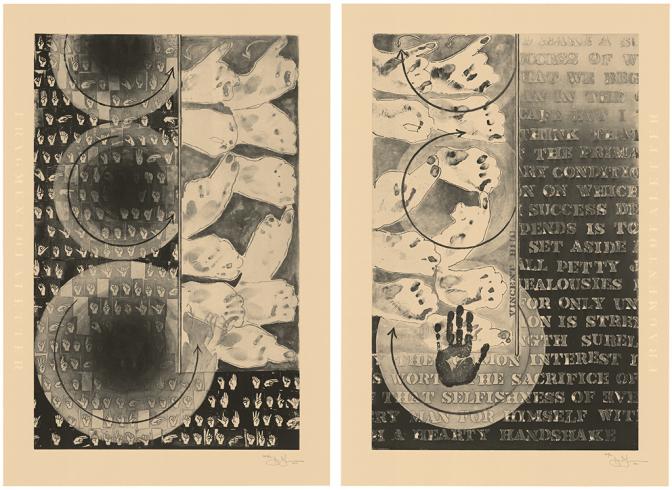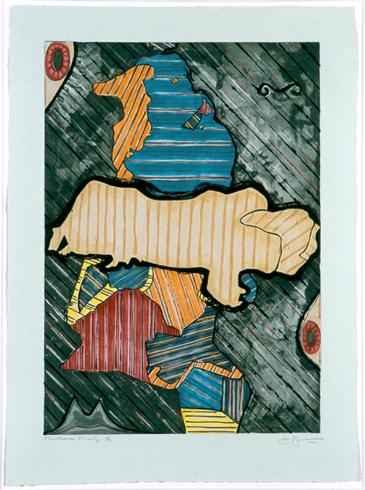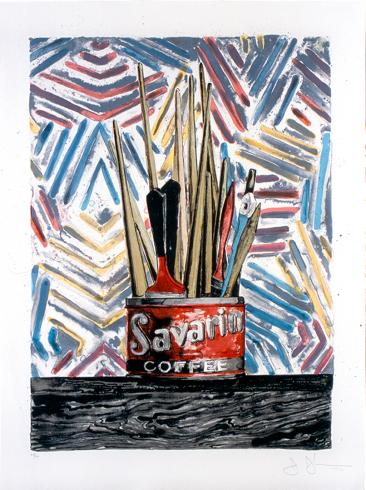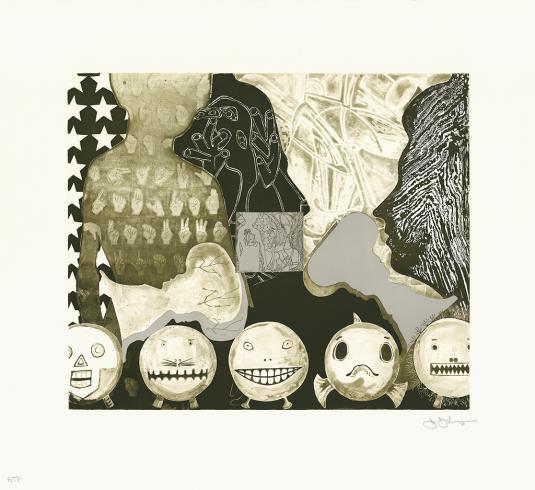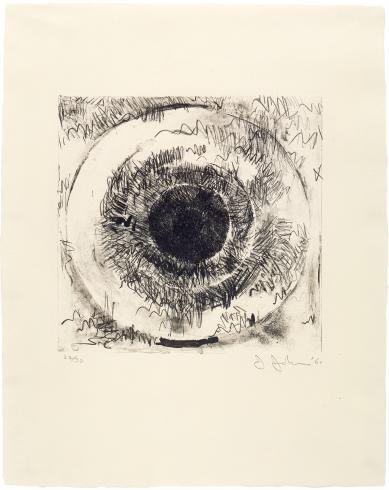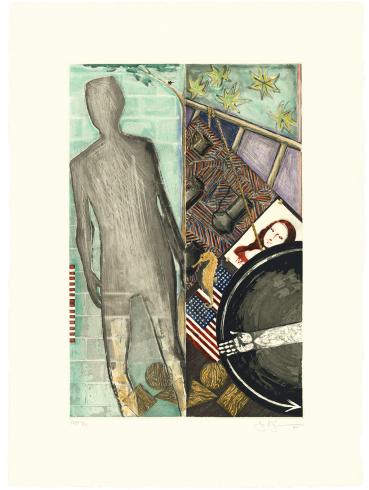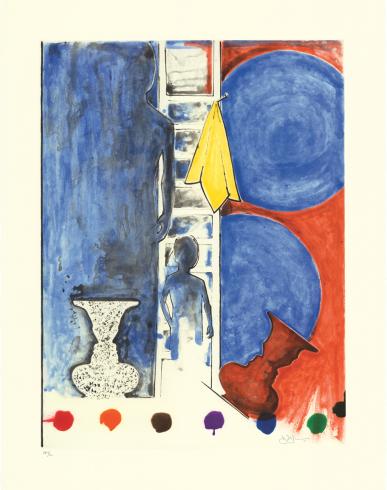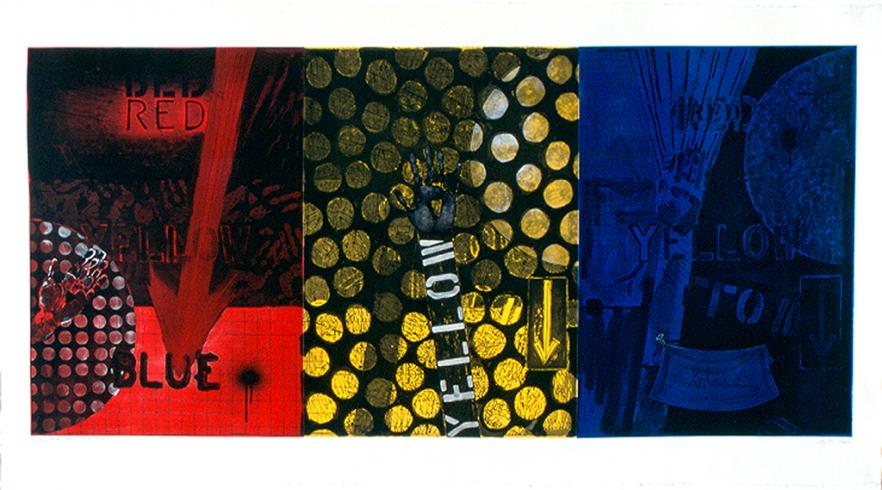Jasper Johns
Variations on a Theme
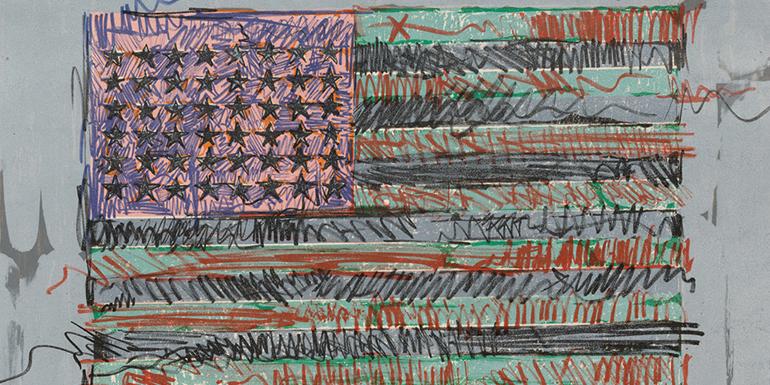
Jasper Johns’s creative impulses and collaborations with distinguished print workshops have produced over 360 editions, acclaimed as some of the most pioneering artworks of the last century. Printmaking has been integral to the American artist’s career for more than five decades. His interest in making variations of a single motif found a natural outlet in the medium, which allows for the reworking of ideas and records the stages that lead to a final image. While lithography has been his primary technique, Johns has also used intaglio, silkscreen, and lead relief to interpret subjects drawn from popular culture, his earlier work, and the history of art.
Jasper Johns: Variations on a Theme celebrates the artist’s visionary response to printmaking. Johns uses the medium to revisit and vary his subjects, transferring, reversing, repeating, and layering imagery in new and exciting combinations. The exhibition opens with early prints from 1960 like Target, Flag III, and 0 through 9, when Johns first experimented with lithography at publisher Universal Limited Art Editions in Long Island, New York. It unfolds with variations of these subjects to reveal the artist’s evolving interests through the decades. Figure 1 (1969) shows his exploration of color and printmaking techniques in collaboration with publisher Gemini G.E.L. in Los Angeles, California. The series Fragments–According to What (1971) excavates details from his 1964 painting, According to What. In the 1970s, an abstract aesthetic emerges with a crosshatch motif in works like Savarin (1977). In the 1980s, Johns began incorporating autobiographical references from his home and studio as well as traced fragments of other artist’s work, as seen in the remarkable intaglios The Seasons (1987). The grand etching Untitled (Black with Primaries) (1991), created with copper plates he had used 10 years earlier, demonstrates Johns’s inclination to use the materials of printmaking to interpret imagery in new ways. Johns’s latest prints, Fragments of a Letter (2010) and Shrinky Dinks 1–4 (2011), combine stenciled text and hand gestures from American Sign Language. This exhibition’s rich array of well-known works and ambitious new experiments traces the journey of Johns’s innovative prints from 1960 to 2011.
Artist’s Profile
Jasper Johns has been a central figure in modern and contemporary art since the 1950s. Born in Augusta, Georgia, and raised in South Carolina, Johns wanted to be an artist at an early age. After attending classes at Parsons School of Design and serving in the army during the Korean War, Johns moved permanently to New York in 1953. There, he worked as an artist and belonged to an intimate circle of friends that included artist Robert Rauschenberg, composer John Cage, and dancer Merce Cunningham.
Johns’s exhibition at the Leo Castelli Gallery in 1958 was a major turning point in his career; his depictions of everyday subjects—“things the mind already knows”—pulled away from the grandeur of Abstract Expressionism and paved the way for Pop Art and Minimalism. The Museum of Modern Art purchased three pieces from the show, a feat which opened many new opportunities for Johns. For over 50 years, Johns has challenged the possibilities of printmaking, painting, and sculpture, laying the groundwork for a wide range of experimental artists. Some of the iconic motifs that Johns has interpreted throughout his career include: flags, targets, numbers, ale cans, maps of the U.S., the crosshatch pattern, and, more recently, the catenary curve and gestures from American Sign Language.
His works have been exhibited in major museums around the world, including the Metropolitan Museum of Art, New York; the National Gallery of Art, Washington, D.C.; the Centre Pompidou, Paris; and the Kunstmuseum Basel. He represented the United States at the Venice Biennale in 1988 and was awarded the Grand Prix. He was presented with the Presidential Medal of Freedom by President Barack Obama in 2011. Johns currently lives and works in Sharon, Connecticut, New York, and the Caribbean island of Saint Martin.
Printers' Notes
Jasper Johns’s collaboration with prestigious fine art publishers has been vital to his development as a printmaker. This exhibition includes major prints from his work with Universal Limited Art Editions and Gemini G.E.L. among other workshops.
Gemini G.E.L.
“Jasper understands process and how things work and he understands collaboration… . And the artist who’s really keen about process and nuance is going to take the time to find that difference and make a note of it, so that when he makes his next stone he already has an idea of what is possible and what is not possible.”—Kenneth Tyler
After 8 years at ULAE, Johns accepted Kenneth Tyler’s invitation to work at Gemini G.E.L. (Graphic Editions Limited) in Los Angeles. Johns explained: “All of my work that I had done before I came here was done at Tatyana Grosman’s shop and I wanted to see what another situation was like… . I would say that there is a different tempo… . Consequently one’s thought is altered a little bit.” Founded in 1966 by Sidney B. Felsen, Stanley Grinstein, and Kenneth Tyler, Gemini G.E.L. practices a teamwork approach, encouraging experimentation and innovation. Artist and printer collaborate on test impressions that translate idea to image, an ongoing exchange leading to the final work.
Johns’s inquisitive experiments have pushed printmaking to new levels. He explained, “What interests me is the technical innovation possible.” In 1969, Johns initiated lead reliefs, the most experimental printing process at Gemini G.E.L. up to that time.
Universal Limited Art Editions
“I saw [Johns’s] work at the Museum of Modern Art exhibition and I got very excited about his painting of a coat hanger. It was irresistible… . I decided right away that I wanted to work with Jasper Johns. If he comes to my studio my life would have meaning, a sense.”—Tatyana Grosman
In 1957, Tatyana Grosman established print publisher Universal Limited Art Editions (ULAE) at her home just outside New York City. Grosman invited Jasper Johns to ULAE in 1960, and that year he produced the lithographs Target, Coat Hanger I, 0 through 9, and Flag I. He also created variations of them and started his 0–9 series. Johns’s instinct to add, wipe away, and transform drawings on the stone produced amazing effects. By changing the color, papers, and number of stones used in the process, he varied the same image in different ways and recorded the changes that shaped the final image. At ULAE, Johns was also introduced to etching, as seen in 1st Etchings (1968), as well as offset lithography in the major works Decoy (1971) and Voice 2 (1982).
ULAE contributed to the printmaking renaissance that occurred in the United States during the 1960s. Recognized New York artists such as Robert Rauschenberg, Barnett Newman, and many others collaborated with master printers at ULAE and other workshops and launched a renewed interest in what had been considered a forgotten artistic practice.
